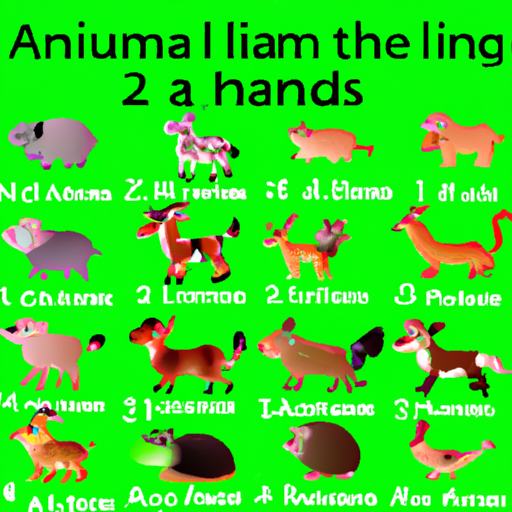 Introduction:
Introduction:
Children’s early years are crucial for their overall growth and development. During this time, they are like sponges, absorbing information and making connections with the world around them. One fascinating aspect of a child’s cognitive development is their ability to recognize and identify various animals. In this article, we will delve into the topic of how many animals a 2-year-old should know, exploring the significance of animal recognition, suggesting age-appropriate milestones, and providing strategies to foster this knowledge.
The Significance of Animal Recognition:
Animal recognition is not just about learning the names of different creatures; it plays a vital role in a child’s cognitive, language, and emotional development. Understanding animals helps young children develop their vocabulary, expand their knowledge of the natural world, and enhance their ability to make connections between objects and words. Furthermore, animal recognition fosters empathy and compassion, as children learn about different species and their characteristics.
Age-Appropriate Milestones:
While every child develops at their own pace, there are general milestones that can guide parents and caregivers in assessing their 2-year-old’s animal recognition skills:
1. Basic Animal Identification (18-24 months): At this stage, most children can identify common animals like dogs, cats, birds, and farm animals such as cows, horses, and chickens. They may also recognize animals they encounter frequently in books, toys, or videos.
2. Expanding Animal Vocabulary (24-30 months): By this age, children may start recognizing a wider range of animals, including those less common or exotic, such as elephants, tigers, lions, and monkeys. This expansion is often facilitated through exposure to books, flashcards, and educational media.
3. Associating Sounds and Movements (30-36 months): Around the age of 2.5 to 3 years, children begin associating specific sounds and movements with certain animals. They might imitate a dog’s bark or a cat’s meow, as well as mimic the movements of animals like hopping like a bunny or slithering like a snake.
Strategies to Enhance Animal Recognition:
To support a 2-year-old’s animal recognition skills, consider implementing the following strategies:
1. Reading Animal-Focused Books: Introduce age-appropriate books that feature animals as main characters, engaging your child in discussions about the animals’ appearances, sounds, and behaviors. Encourage them to point out and name the animals they recognize.
2. Incorporating Animal Toys and Puzzles: Provide your child with animal-themed toys, puzzles, and stuffed animals. Engage in playtime where you can ask them to identify and label the toys based on their animal types.
3. Nature Walks and Zoo Visits: Take your child for walks in nature or visit local zoos, wildlife parks, or petting zoos. Encourage them to observe and identify animals in their natural habitats, discussing their unique features and behaviors.
4. Digital Resources: Utilize age-appropriate educational apps, interactive websites, and videos that focus on animals. These resources can offer visual and auditory stimuli, enhancing your child’s learning experience.
5. Songs and Rhymes: Introduce animal-themed songs and rhymes that involve actions and sounds. Singing and dancing along can help reinforce the animal recognition process while making it a fun and interactive experience.
6. Real-Life Experiences: Whenever possible, expose your child to real animals, whether it’s through visiting a farm, a pet store, or a friend who owns pets. This hands-on experience can deepen their understanding and connection with different animals.
Conclusion:
Animal recognition is an essential developmental milestone for a 2-year-old, with numerous cognitive and emotional benefits. While the exact number of animals a child should know can vary, an age-appropriate progression can guide parents and caregivers in fostering this knowledge. By implementing strategies such as reading books, incorporating animal toys, visiting zoos, utilizing digital resources, singing songs, and providing real-life experiences, we can cultivate a child’s curiosity and understanding of the animal kingdom, setting them on a path of lifelong learning and appreciation for nature.
